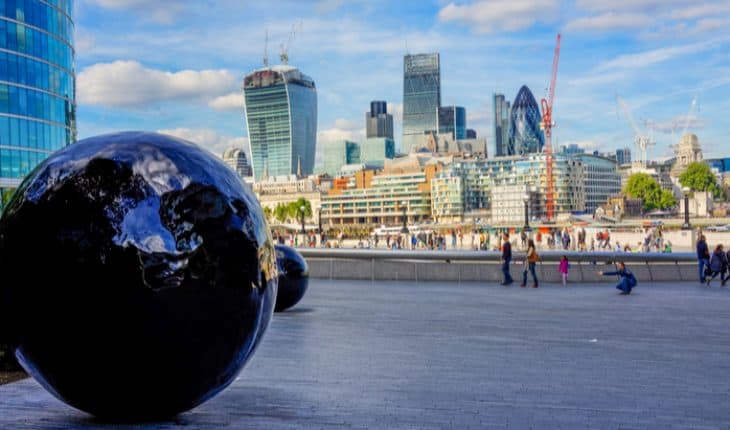How do buildings affect our health and wellbeing? A major new exhibition ‘Living with Buildings’ curated by Emily Sargent, opening at Wellcome Collection, London, on 2nd October seeks to answer this question. The show tackles how our environment affects how we work, sleep, socialise and even breathe. In his fascinating new book inspired by the exhibition Iain Sinclair writes: ‘We shape – and are shaped – by the walls that contain us. Buildings can isolate and endanger us, but can also heal us. We project our hopes and fears onto buildings, while they absorb our histories.’ Buildings provide us with a sanctuary from the outside world, but they can also isolate and endanger us.
Living with Buildings will take over both of the museum’s temporary exhibition spaces to examine how the structures that surround us shape our mental and physical health, in both positive and negative ways.
Aiming to explore the relationship between architecture and healthcare the exhibition promises to shed light on the impact architecture has on our health, for better and worse. From the slums of Dickensian London to the utopian experiments of postwar urban planners, such as high rise towers and infirmary tents and modernist sanatoriums, to sophisticated, new therapeutic spaces for cancer patients to the role architecture can play in worldwide healthcare provision, the show will chart architects’ relationship with human wellbeing – and how their best intentions don’t always pan out.
From the slums of Dickensian London to the utopian experiments of postwar urban planners, such as high rise towers and infirmary tents and modernist sanatoriums, to sophisticated, new therapeutic spaces for cancer patients to the role architecture can play in worldwide healthcare provision, the show will chart architects’ relationship with human wellbeing – and how their best intentions don’t always pan out.
We spend more than 21 hours per day in buildings – that’s around 90% of our time, between home, the office, shops and school and doctors’ surgeries and they have a major impact on our health. Buildings can affect our relationships and work performance, as we feel and perform better when we feel healthy and in tune with our surroundings. We also get on better with our families, friends and colleagues.
Around 80 million of Europeans currently live in damp or mouldy dwellings which have a detrimental effect on their health, nearly doubling their risk of developing asthma and allergy. Research has shown that a good working environment increases productivity. Office workers take less sick leave owing to minor illnesses, such as sore throats and colds if offices are well lit, preferably by natural light, as well as artificial, and are properly heated and dry.
Spanning two floors of Wellcome Collection this will be the first exhibition to chart how shifts in thinking and approaches to design have impacted on health and wellbeing. The exhibition aims to examine the positive and negative influence buildings have on our health and wellbeing.
Gallery 1, (downstairs), houses objects and artworks that explore the power of urban planning, from Dickensian slums to high-rise towers, and the design principles that have inspired hospitals, health centres and therapeutic spaces. The show features over 100 objects including the work of Camille Pissaro, Andreas Gursky and Rachel Whiteread, and buildings designed by Lubetkin, Goldfinger and Aalto and a new commission by artist Giles Round exploring the role colour can play in making us feel better. It will consider the perspectives of those who use buildings to live in and heal, as well as those who design them.
Upstairs is devoted to a major commission, an innovative mobile clinic for delivering adaptable healthcare in emergency situations and remote locations. Designed for Doctors of the World by Rogers Stirk Harbour + Partners with BuroHappold and Chapman BDSP. The Global Clinic will be built for the first time at the opening.
At a time when more and more people live in metropolitan areas, Living with Buildings will look back at the impact of urbanisation on sanitation in Victorian London and the creation of suburbs and garden cities for the wealthy. Purpose built towns, such as Bournville in Birmingham and Saltaire near Bradford, reveal the motives of philanthropic factory owners.
Concepts of home, from the high-rise Pepys estate in Deptford to the model village of Poundbury in Dorset, will be explored alongside post-war efforts to find a new modern way of living. Archive photographs and footage of experimental health clinics in Peckham and Finsbury will reflect on attempts to improve the health and living conditions of the poor, with a focus on community and prevention.
The exhibition will also look at healing spaces such as smallpox tents and small cottage infirmaries, as well as schemes for twentieth century and contemporary hospitals. Plans and photographs of Aalvar Aalto’s sanatorium in Paimio, Finland, will show how he was guided by the requirements of tuberculosis patients and considered the building a medical instrument in and of itself. In the UK, Maggie’s Centres also emphasise the importance of environment, with each unique building designed to create a supportive space for those living with cancer.
Our lives are shaped by the buildings that surround us and absorb our histories. This exciting new exhibition will make you look anew at the buildings that surround and shape us.
Living with Buildings, (4th October 2018 to 3 March 2019) at the Wellcome Collection, 183 Euston Road, Euston, London NW1 2BE; tel. 0207 611 2222 free admission
Gallery opening hours Mon- Gallery closed; Tues & Wed 10am – 6pm; Thurs 10am -10pm; Fri & Sat – 10am-6pm
https://wellcomecollection.org
‘Living with Buildings’ by Iain Sinclair published by Wellcome Collection and Profile Books in September 2018
- People’s Choice Victory for Down’s Syndrome Scotland Garden at Chelsea 2025 - 28th May 2025
- Cadogan: A Chelsea Family By Tamsin Perrett - 3rd May 2025
- Dream Worlds a new exhibition in Cambridge - 14th December 2024







